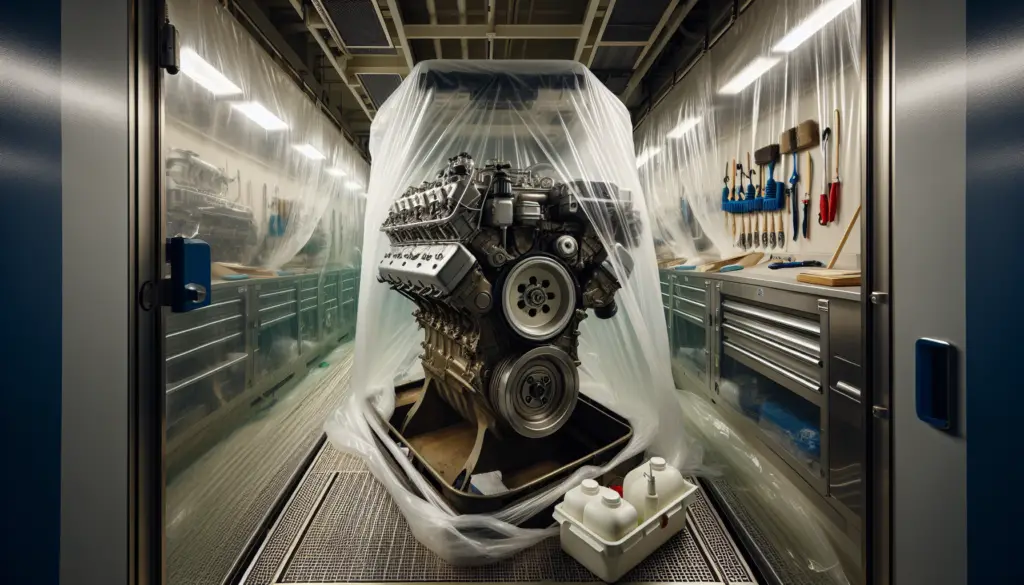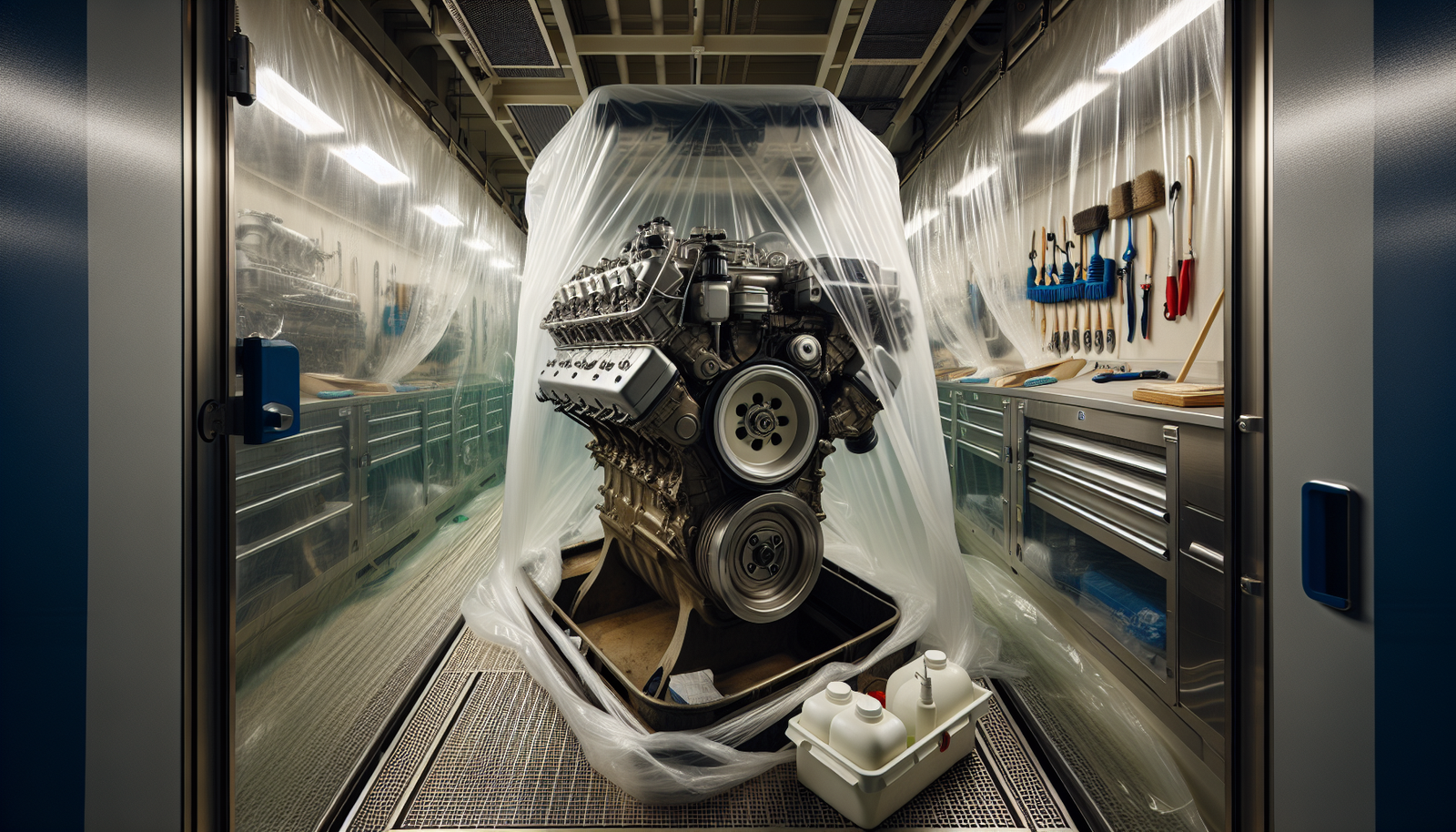In the thrilling world of boats and marine equipment, maintenance and preservation are key to ensuring longevity. In the upcoming article titled “How to Properly Store and Preserve Your Boat Engine During Long Periods of Inactivity”, you find practical steps and professional tips to aid you in preserving the life of your boat engine. You’ll discover the right approach to care for that precious engine when it’s not in use, sparing it unnecessary wear and tear. Explore this guide to learn everything you need to keep your boat engine in pristine condition, ready to roar back to life at your command.

Importance of Proper Engine Storage
Oh, the joy of sailing on open waters! As lovers of sea excursions, it’s essential to care for our water companions, our boats. Much like your favorite car or motorcycle, your boat’s engine requires certain attention and upkeep to remain in good condition. Among the crucial aspects of boat upkeep, engine storage holds paramount importance.
Why engine storage is crucial
Why make such a fuss about boat engine storage, you ask? Well, your boat’s engine is the heart of your vessel, and proper storage ensures a longer life span. Also, it keeps the engine performing at peak efficiency, making your sailing smoother and more enjoyable. Moreover, storage helps to prevent severe damage that can result in costly repairs. Think of it as preventive maintenance, future-proofing your engine.
Potential risks of improper storage
Just like maintaining good health prevents diseases, proper engine storage prevents various issues that can pop up due to negligence. Improper storage can lead to corrosion, gunk build-up, oil leakage, battery discharge, and the hardening of internal components. All these things could potentially turn your boating experience into a nightmare. Hence, paying attention to engine storage is a no-brainer.
Effects of inactivity on boat engines
Boat engines, particularly those for pleasure crafts, are not designed to sit idle for long periods. Inactivity can cause a myriad of issues like oil drainback, coolant evaporation, and condensation build-up, leading to general degradation. Imagine trying to sprint after spending months on a couch, terrifying right? It’s somewhat similar for boat engines; prolonged idle times can cause significant wear and tear when you start it next.
Understanding Your Boat Engine
Before embarking on a storage preparation journey, it is beneficial to understand basic information about your boat’s engine. It helps you know what you’re dealing with, resulting in a more effective storage process.
Types of boat engines
Boat engines come in a few variants – outboard, inboard, inboard/outboard (also known as sterndrive), and jet propulsion. Each has its specific design and structure, impacting the type of care it requires.
Key components of boat engines and their functions
While the specifics vary, most boat engines have key components like the engine block, cylinders, pistons, crankshaft, camshaft, valves, oil and fuel filters, etc. Each performs its function, playing a part in the engine’s smooth operation.
Engine’s vulnerability to downtime
As mentioned earlier, boat engines are not designed for prolonged inactivity. The idle situation affects almost all key components and can lead to a host of issues, from simple performance reduction to serious damage.
Preparatory Measures Before Storage
Preparation is key in everything we do and storing your boat engine is no different. Strategically planning and executing this process can prevent untold headaches down the road.
Understanding the Storage process
Boat engine storage is not as simple as just parking your boat and covering it. It involves several steps like cleaning, fuel treatment, oil changes, and component checks. All this is aimed at preventing any damage during the idle period.
Items required for storage
Ensure you have all the necessary items for storing your engine: cleaning supplies, oil and oil filter, fuel stabilizer, fogging oil, antifreeze, new spark plugs, maintenance tools, and a good-quality cover.
Ideal conditions for boat engine storage
The place where you store your engine greatly affects its wellbeing. A dry place with good ventilation, temperature control, and protection from pests and dirt is ideal. Also, properly covering your engine, especially if it’s an outdoor storage spot, is critical.

Performing Engine Maintenance Prior to Storage
Before tucking your engine away for its nap, give it a good round of maintenance. This step ensures that your engine is ready to roar back to life when you need it.
Inspection for damages and wears
Begin by thoroughly inspecting the engine for any visible signs of wear, damage, or leaks. Check the belts, hoses, filters, and oil levels. Ignoring these elements can worsen during the downtime and cause further damage.
Cleaning the engine
Cleaning the engine ensures freedom from dirt, dust, or marine growth. This step discourages corrosion and improves the longevity of the engine.
Changing engine oil and filters
The old engine oil contains acids and moisture that could harm your engine during storage. Changing the oil and filters ensures that your engine is protected from corrosion and any dirt particles.
Engine Winterization Process
If you’re storing your boat during the freezing months, you need to perform an additional step called winterization. It protects your engine from the harsh cold conditions and prevents freezing damage.
Overview of the winterization process
Winterization involves key steps to prepare your engine for the cold. This includes running the engine with antifreeze, fogging the engine, oil changing, disconnecting the battery, and properly covering the engine.
Steps to winterize an outboard engine
For outboard engines, start by flushing the system with fresh water, then apply fogging oil to all moving parts. Change the gear oil, lubricate external moving parts, and then store upright to ensure proper drainage.
Steps to winterize an inboard engine
Inboard engines would require fuel stabilization; then you’d run the engine to distribute stabilized fuel. Changing the oil, replacing the oil filter, and coolant system flush with antifreeze are the following steps. Then, remove spark plugs and spray fogging oil into each plug hole.
Engine Fuel System Care
Your fuel system is another essential aspect that needs diligent care. It plays a key role in the smooth operation of your engine.
Reasons for staying on top of fuel system care
If overlooked, a poor fuel system can result in poor engine performance, slower speeds, and low fuel efficiency. It might even cause complete engine failure.
How to treat the fuel system before storage
Adding a fuel stabilizer to the fuel system can prevent fuel degradation. Once you add the stabilizer, run the engine for a few minutes to ensure it circulates throughout the system.
Dealing with possible fuel system issues
In case of any fuel system issues, it’s wise to consult a professional mechanic. They can guide you with solutions to prevent further damage to your engine.
Caring for the Engine’s External Components
You’ve taken care of the heart (engine internals); now, let’s focus on the skin (engine externals).
Cleaning and treating the engine’s exterior parts
A thorough clean-up of your engine’s exterior parts discourages rust and corrosion. Apply a protective layer over surfaces. Ensure any moving parts are thoroughly lubricated to prevent them from seizing due to inactivity.
Anti-corrosion measures for engine’s external components
For further protection, you can use anti-corrosion spray on the exterior parts. This helps to shield your engine against harsh weather and moisture during storage.
Covering the engine properly
Once all steps are performed, cover your engine properly. Besides dirt and dust, a good cover protects your engine against UV rays, rain, snow, and insects.
Battery Care and Removal
Your engine’s battery requires attention too. Mismanaged batteries can lead to problems when trying to restart your boat engine after a prolonged period of rest.
Why removing the battery is vital
Leaving the battery within the engine during storage might cause gradual discharge, potentially damaging your battery. Therefore, removing and storing it in a controlled environment is recommended.
Proper process of battery removal
Ensure you disconnect the battery by starting with the negative terminal and then the positive. Clean the terminals, apply anti-corrosion coating, and store it in a cool and dry place.
Tips for battery storage
Store your battery off the ground and on a wood or rubber surface. Also, consider attaching a trickle charger to avoid charge depletion.
Starting the Engine Periodically During the Downtime
You might not take your boat out, but starting your engine once a while can be beneficial.
Advantages of starting the engine periodically
Consistent starting helps to reduce moisture build-up and keeps the engine components lubricated, thereby reducing the likelihood of internal parts seizing.
Ideal intervals between each start
Running your engine for 15 minutes every 4-6 weeks is ideal to keep your engine in a ready state and prevent existing fuel from settling and becoming stale.
Tips for running the engine during downtime
Ensure the engine is warmed up to operating temperature when running. Also, remember to turn off the water supply to avoid any risk of damage, especially during freezing conditions.
Getting the Engine Ready for Use After Storage
As much joy as there is in sailing, there’s equal thrill in bringing your rested beast back to action.
Steps to reactivate the engine
To get your engine ready, start by reinstalling the stored battery. Check and replace necessary parts, lubricate where needed, and fill up with fresh fuel.
Checks to ensure the engine is ready for use
Before you set your boat afloat, perform a thorough check. Ensure there are no oil leaks, all fluids are at appropriate levels, and no signs of corrosion or damage.
The process of de-winterization
If your engine was winterized, follow a de-winterization process. This generally includes flushing the antifreeze, changing the oil, and thoroughly inspecting for any cracks or leaks caused by freezing conditions.
Proper storage of your boat’s engine is an investment that pays off in the long run, resulting in lower maintenance costs, better performance, and an overall better boating experience. So, the next time your boat goes on a holiday, ensure that its heart – the engine – is well taken care of. Happy boating!

